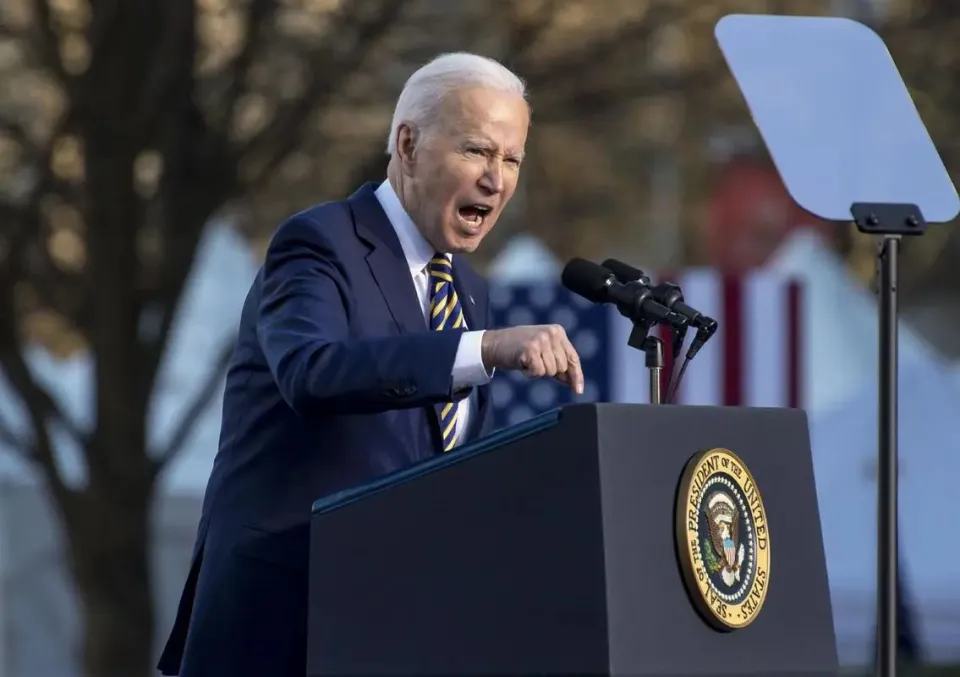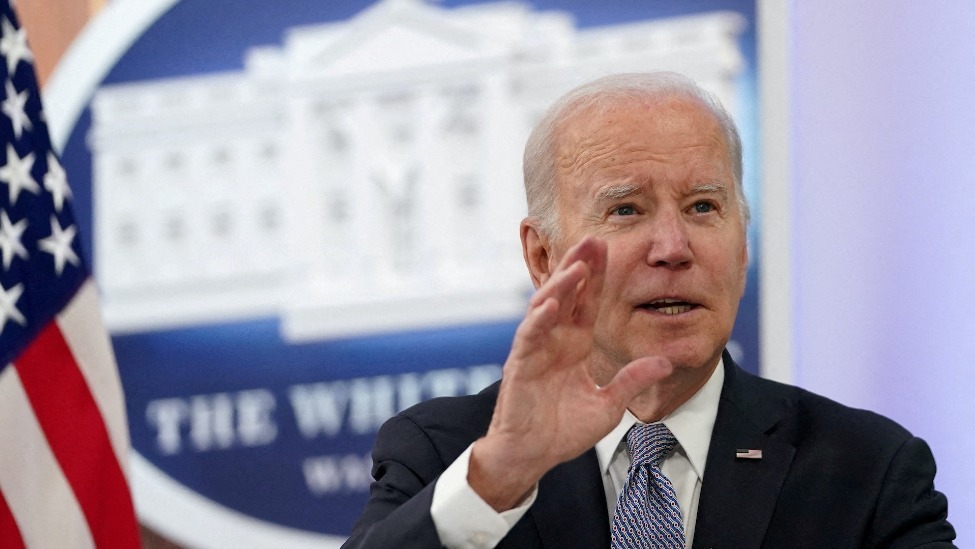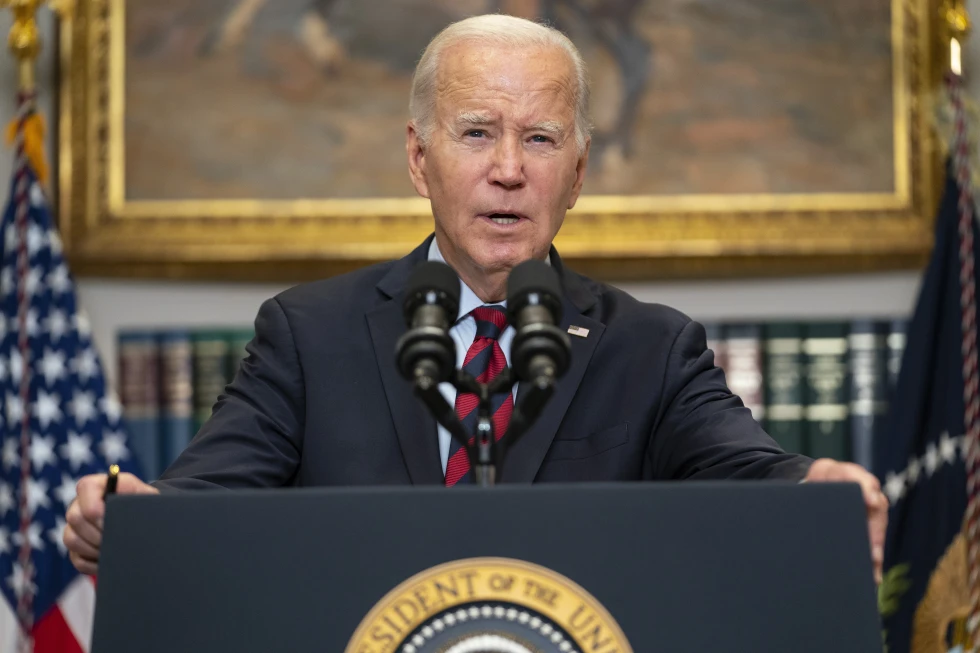In recent times, the issue of inflation has taken center stage in the political and economic discourse of the United States.
President Joe Biden finds himself at the forefront of this battle, as he grapples with the task of not only addressing inflation but also convincing the American public of the progress made.
The recent figures released have shown signs of improvement, indicating a potential return to the Federal Reserve’s target of 2% inflation by the time of the upcoming election.
However, the challenge lies in translating this progress into public perception and ultimately, electoral support.
This essay aims to delve into the multifaceted nature of this issue, examining Biden’s efforts, the impact on public sentiment, and the potential consequences for his reelection prospects.
The recent data on inflation presents a mixed picture, with the consumer price index (CPI) showing an annual increase of 3.4%, while the prices charged by producers rose by a more modest 1% over the past year.
These numbers reflect a historic level of progress in the battle against high prices, providing a glimmer of hope for a return to more stable economic conditions.
President Biden and his administration have been quick to highlight their efforts in addressing inflation, emphasizing a comprehensive approach aimed at tackling the issue from every angle.
White House chief of staff Jeff Zients underscored the ongoing nature of these efforts, signaling the administration’s commitment to continued action in combating inflation.
The crucial question that emerges from these developments pertains to public perception and its potential impact on Biden’s reelection prospects.
The correlation between inflation and public sentiment is evident, as the surge in prices during 2021 and 2022 significantly impacted Biden’s public approval ratings, thereby influencing his standing for reelection.
The challenge for the administration lies in effectively communicating the progress made in addressing inflation to the American electorate.
While there are reasons for optimism with improving consumer sentiment, the ultimate test lies in whether voters perceive and acknowledge the improvements in their day-to-day lives.
The political arena has become the battleground for contrasting narratives surrounding inflation. President Biden can rightfully claim that his policies have contributed to reducing the average price of a dozen eggs to $2.51, a notable decline from the peak of $4.82 recorded last year.
However, opponents, particularly leading GOP lawmakers and former President Donald Trump, have seized upon these figures to advance their own narratives.
Republicans contend that the current inflation crisis continues to burden working families, using the rising costs of necessities such as gasoline and eggs as evidence of ongoing struggles.
Trump, in particular, has framed the issue as a matter of national survival, positioning his potential return to the White House as a solution to lower energy costs and economic stability.
As the nation navigates the complexities of inflation and its implications, the road ahead for President Biden is fraught with challenges and opportunities.
The upcoming election will serve as a litmus test for the public’s perception of the administration’s handling of inflation.
The outcome could hinge on how individuals assess the impact of inflation on their daily lives, particularly concerning essential expenses.
The ability of the administration to effectively communicate its efforts and the tangible improvements achieved will be instrumental in shaping public sentiment and, consequently, electoral support.
The battle against inflation has emerged as a pivotal issue for President Joe Biden, with far-reaching implications for his political future.
The recent strides in addressing high prices present a compelling case for progress, yet the challenge lies in translating this into public perception and electoral support.
As the political debate rages on, the administration’s ability to navigate this terrain and effectively communicate its policies and achievements will be pivotal.
The coming months will reveal the extent to which the American public acknowledges and rewards the efforts made to combat inflation, ultimately shaping the trajectory of President Biden’s reelection prospects.
The economic policies and their impact on energy prices have been a central focus of recent U.S. administrations, particularly under the leadership of Presidents Donald Trump and Joe Biden.
The debate surrounding energy prices, inflation, and economic stability has been a subject of intense discussion and analysis.
The contrasting approaches and outcomes of these policies have sparked significant interest and scrutiny.
During his presidency, Donald Trump advocated for increased domestic drilling and a reduction in energy prices, particularly gasoline.
His promise to bring gasoline prices down to $2 or even lower resonated with many Americans. The subsequent decline in gas prices, notably below $2 a gallon, was observed in early 2020.
However, this decrease coincided with the onset of the coronavirus pandemic, which led to widespread closures of schools and businesses, causing a significant economic shock and a surge in unemployment.
In contrast, President Biden inherited an economy grappling with uncertainty due to the pandemic’s unpredictable trajectory.
He responded by signing a substantial $1.9 trillion aid package, which some critics argue contributed to a surge in inflation, reaching a four-decade high of 9.1% in June 2022.
However, the Biden administration attributes the subsequent decline in inflation to a series of deliberate policy choices.
These included granting the Federal Reserve the flexibility to raise interest rates, addressing supply chain issues, and stabilizing gas prices.
Additionally, the administration emphasized job growth as a crucial factor in the economic recovery, rejecting the notion that mass job losses were necessary to combat inflation.
The White House’s approach to inflation was multifaceted, focusing on global supply chain challenges and international economic trends.

President Biden and his advisors recognized the global nature of the issue, citing disruptions in factories worldwide, soaring shipping container costs, and significant delays at U.S. ports.
In response, the administration pursued strategies to enhance supply chains, collaborating with the private sector and implementing measures to alleviate bottlenecks at major ports.
Furthermore, the Biden administration’s policies have aimed to address broader economic and environmental concerns, including investment in infrastructure, semiconductor production, and a shift away from fossil fuels.
These efforts were complemented by initiatives to reduce insulin prices for Medicare beneficiaries, reflecting a multifaceted approach to economic and healthcare challenges.
The administration’s emphasis on job creation and economic stability has yielded tangible results, with significant job growth and a relatively low unemployment rate.
The administration’s policies, including the bipartisan infrastructure law, have contributed to the creation of millions of jobs, surpassing initial estimates.
The administration’s approach to addressing inflation and economic recovery has emphasized a balance between price stability and job preservation, rejecting the notion of sacrificing employment to combat inflation.
In conclusion, the contrasting economic policies and approaches of the Trump and Biden administrations have shaped the trajectory of energy prices, inflation, and economic recovery in the United States.
The dynamics of domestic and global economic forces, supply chain challenges, and the interplay between fiscal and monetary policies have been central to these developments.
The Biden administration’s emphasis on job growth, supply chain improvements, and a multifaceted approach to economic challenges has been pivotal in navigating the complexities of inflation and economic recovery.
The ongoing dialogue and evaluation of these policies will continue to be critical in shaping the future trajectory of the U.S. economy.
The issue of inflation and its impact on the economy has been a topic of great concern in recent times, particularly in the context of President Biden’s handling of the situation.
The president’s assertion in July 2021 that the inflation would be “temporary” has been widely criticized, as the inflation continued to accelerate for nearly a year after his statement.
This has led to a significant decline in public approval of his economic leadership, with 65% of U.S. adults expressing disapproval of his handling of the economy, according to a survey by The Associated Press-NORC Center for Public Affairs.
In a November analysis by the White House, it was revealed that 80% of the decline in the inflation rate since 2022 was due to improved supply chains.
This indicates that supply chain issues were a major contributing factor to the inflation problem. Additionally, the pace of hiring eased as the recovery matured, which also played a role in slowing down inflation.
The housing costs were identified as the major driver of inflation in the consumer price index, but experts believe that these costs should decline over the coming months, further reducing the rate of inflation.
However, the supply chain was not the sole problem for President Biden. The invasion of Ukraine by Russia in early 2022 led to a significant increase in food and energy prices, as the market saw the risks of shortages caused by the war.
In response, President Biden released a historic 180 million barrels of oil from the U.S. strategic reserves.
While some analysts and Republicans downplayed the release as a temporary solution, the White House argued that the daily release of 1 million barrels over the next six months would provide a bridge until U.S. oil production could increase.
Republican lawmakers have criticized President Biden for not being friendlier to oil drilling, but the data suggests that the U.S. market responded to the initial lure of high prices by increasing production, thus limiting the risk of inflation going forward, despite the turmoil with the Israel-Hamas war and recent Houthi attacks of ships in the Red Sea.
It is worth noting that the Biden administration has made support for renewable energy one of its priorities to address climate change.
As a result, officials don’t talk much about the record domestic oil production. Ben Harris, a former assistant secretary at the Treasury Department, said the release and a price cap on Russian oil ensured “there was not a 1970s style oil shock.”
Despite these efforts, voters are far from reassured. The significant decline in public approval of President Biden’s economic leadership reflects the ongoing concerns about the impact of inflation on the economy.
In March 2021, when the pandemic aid became law and inflation was just 2.6%, 60% of adults said they approved of Biden’s economic leadership. However, the current disapproval rating indicates a shift in public sentiment.

In conclusion, the issue of inflation and its impact on the economy is a complex and multifaceted problem that requires a comprehensive and strategic approach.
While the Biden administration has taken steps to address the supply chain issues and release oil reserves to mitigate the impact of inflation, there is still much work to be done to reassure the public and address their concerns.
It is crucial for the administration to continue to monitor the situation closely and implement effective policies to stabilize the economy and restore public confidence in its economic leadership.
